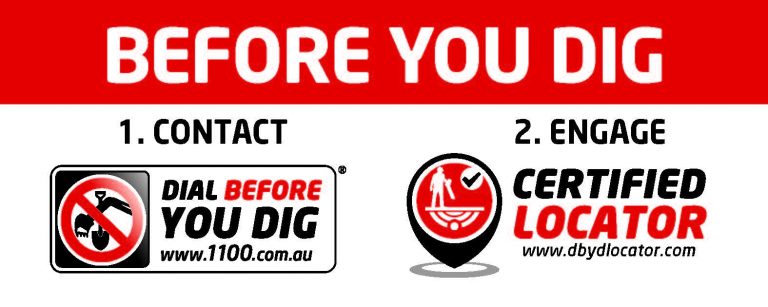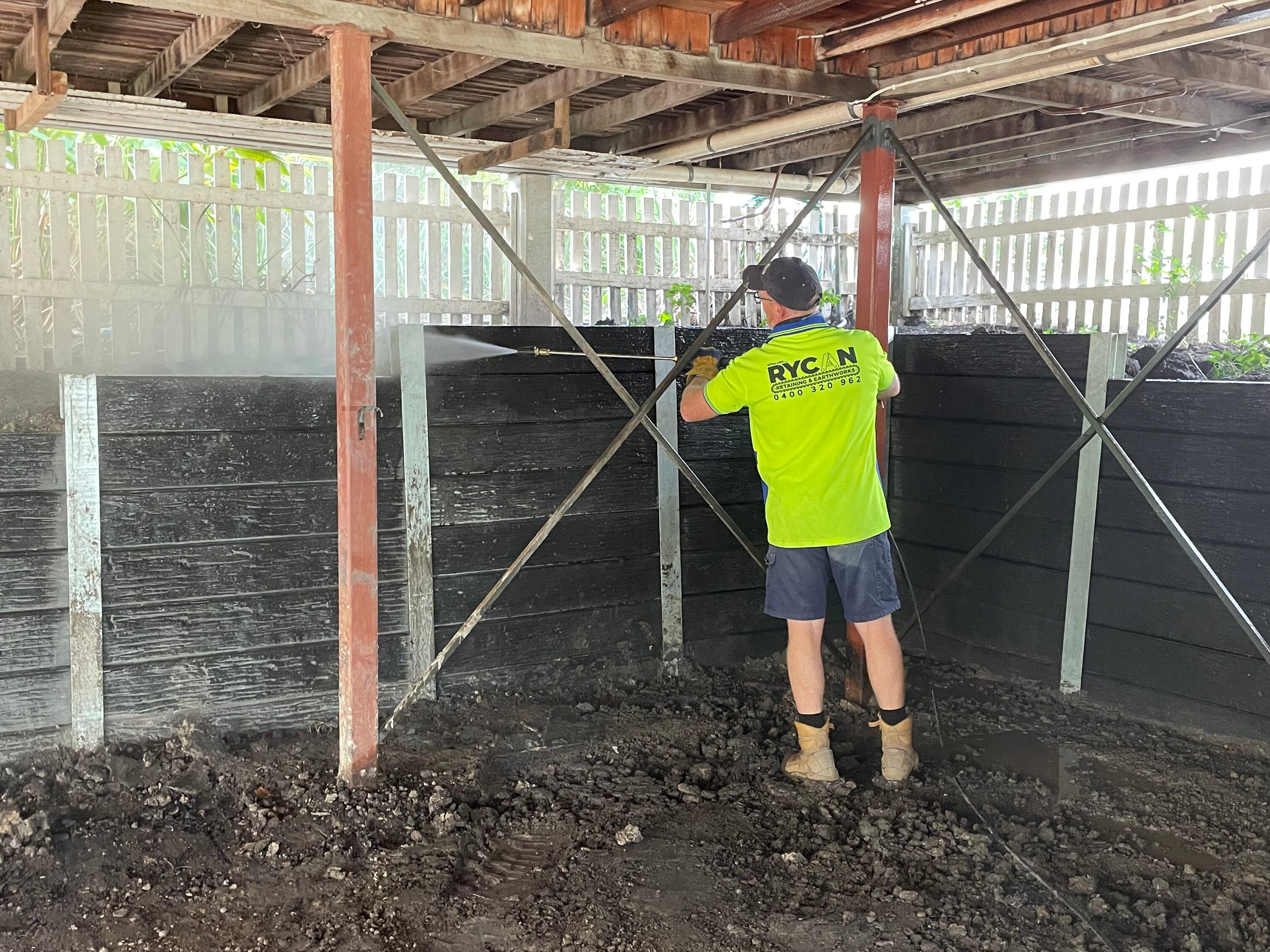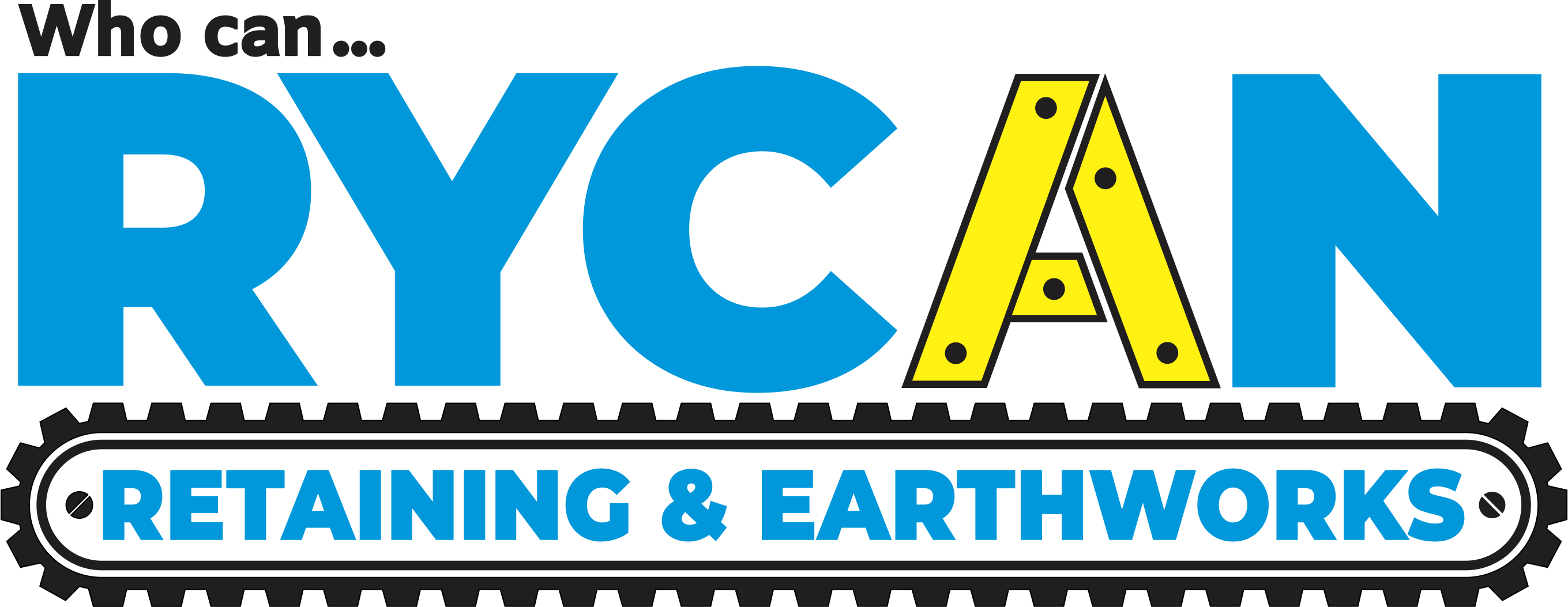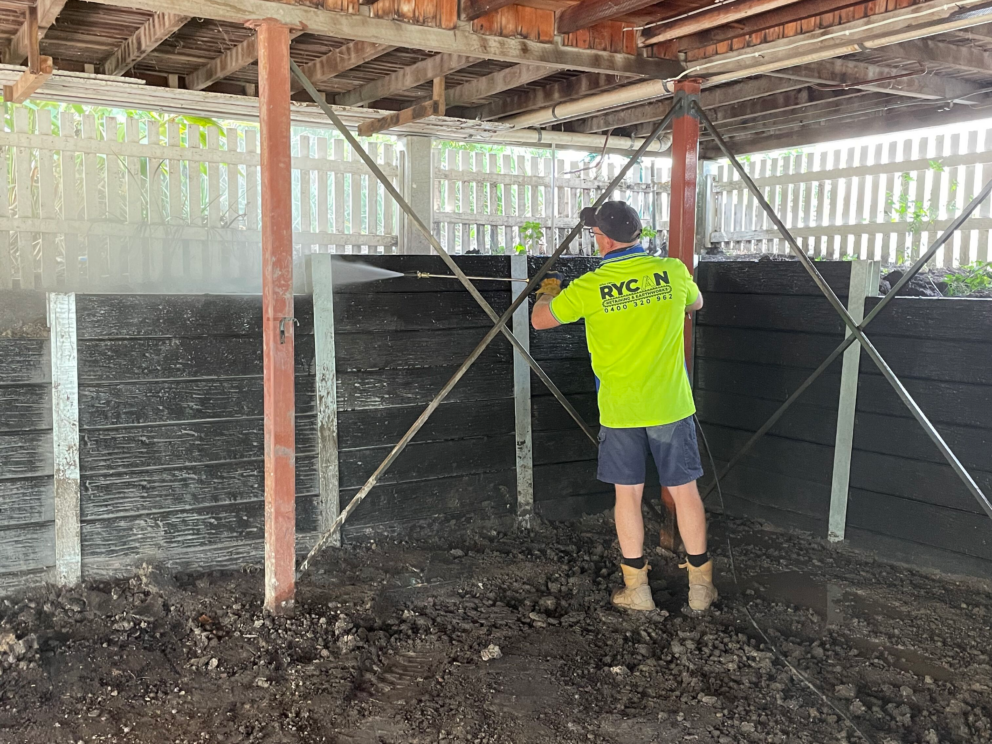The 5 key professionals that assist in constructing an engineered retaining wall in Brisbane and Ipswich.
DBYD Certified Locator
A Dial Before You Dig Certified Locator is an essential first step before performing any excavation services. Beyond the publicly available information accessible via the DBYD platform, which will only show you the approximate location of assets up to your property. DBYD Certified Locators can scan for underground utilities within your parcel, mark their exact location and provide you with a map and report for future reference.

Knowing underground utility whereabouts is vital from a safety perspective. Additionally, the location of these assets can impact the material used to build the structure, overall engineering plans and building approvals. When a utility asset is damaged during construction, the repair cost can range from a couple of hundred dollars to tens of thousands, depending on the type of asset.
Geotechnical Engineer – Soil Testing
One of the primary goals in any successful construction project is to have confidence that the structure you intend to build will sit on a solid foundation.
To achieve this, a Geotechnical Engineer must analyse the qualities and engineering parameters of the soil to understand the type of soil and conditions present on a site. The findings obtained through the soil samples and laboratory tests will determine the foundations required for the structure.
A Geotechnical Engineer’s Soil Report will be heavily relied upon by a Structural Engineer.
Structural Engineer (RPEQ Qualified)
In Queensland, you must hire a structural engineer to draft plans for any retaining wall over 1 metre high, within 1.5 metres of a shed, dwelling or another retaining wall, within 3 metres of a pool or underground utilities owned by either Council or a 3rd party, e.g. Urban Utilities.
Structural Engineers analyse the statical properties of all types of structures, test the behaviour and durability of materials used in the construction, and design and supervise stages of the building process.
The Structural Engineer will require the Soil Test Report from the Geotechnical Engineer, and if your project requires it, the utilities report obtained from a Dial Before You Dig Certified Locator.
They will also inspect certain stages of the builders’ work to ensure it meets the Australian Building Code Standards. These usually include pier holes, footings and the drainage system. All of these cannot be cited by a Certifier when they perform the final inspection and provide a final sign-off of the completed structure.
A Structural Engineer must provide you with a Form 15— Compliance certificate for building design or specification once the final engineering plans are issued and for each stage inspection performed.
QBCC Licenced Retaining Wall Builder
A QBCC Licenced Contractor must build any retaining wall structure over 400mm in Queensland, as the structure must include a drainage system. Any retaining wall over 1 metre in height must be engineered, approved by the Council, built by a QBCC Licenced Builder and certified.
The QBCC Licenced Builder must hold the relevant qualifications for installing the retaining wall structure. These qualifications may vary depending on the material used and the type of wall required.

Building Certifier
Licensed Building Certifiers assess building applications, decide whether to issue building approvals on behalf of the Council and inspect and certify building works. The Certifier ensures the building works comply with the building assessment provisions, the Building Code of Australia and subsequent approval. Certifiers can work for local government or in private practice.
A Building Certifier will work with the property owner on behalf of the Council to lodge all relevant applications and associated documents.
The Certifier will also perform a final inspection of the finished structure and can issue a Form 61 – Noncompliance Notice to the Builder, which will request that the aspects that don’t comply with the building code or the engineering plans are rectified before a Form 16 or Form 21 – Inspection Certificate, is issued. A Form 16 or Form 21 – is the final certificate the Council requires to confirm that a qualified person has inspected the work and that an aspect of or completed project complies with the building approval provided by the Council and the relevant building laws.
For a detailed understanding of the engineered retaining wall process and laws, along with some professional tips on how to identify the type of structure you should install, check out our other blog, Retaining Wall Engineering, Building Approval, and Certification – The Law and Process in Brisbane and Ipswich Regions.

Author: Candice Parlane – Rycan Retaining and Earthworks

